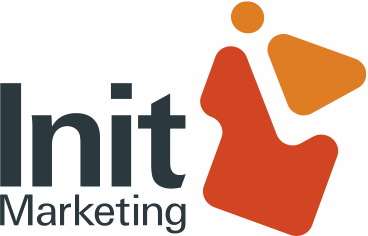Zenoss, the provider of open source network, systems and applications management software, announced the availability of point-and-click installers for Zenoss Core for many Linux platforms.
Thanks to BitRock InstallBuilder Zenoss Core is now installable through RPM, DEB and point-and-click GUI installers.
As seen with Groundwork the “Big 4” are starting to loose their comparative advantage relative to open source IT Management solutions, namely the “Little 4” (Groundwork, Hyperic, Qlusters and Zenoss), as earlier appointed by Michael Coté.
Zenoss, differently from Groundwork that uses a lot of open source network tools and focuses on the presentation layer for monitoring, while Zenoss starts a little lower and builds all the way to the presentation layer using a lot of open source plumbing.
I started asking my twitter buddy Mark Hinkle, VP Business & Community Development at Zenoss, the following question:
How an open source challenger like Zenoss could create a system-wide positive disruption in combination with the entrenched Big 4 players?
As for Zenoss integration with the Big Four we have a few customers who actually share Zenoss event data with Big Four systems. I can think of one user who feeds all Zenoss event data into his legacy monitoring system from HP while he grows using Zenoss Core. Because we expose all our data and code it makes it relatively easy to make REST and XML-RPC calls to Zenoss or event to directly access the data. I expect that others will do things like federate our CMDB with other CMDBs for ITIL compliance.
I think what’s really interesting is that we can quickly develop products that meet the needs of our community users and our enterprise customers because of this, because we are so flexible we see users doing a variety of integrations not just with the big four but other products. Our automatic remediation functionality allows users to kick off other programs based on monitoring data this makes Zenoss a logical partner for other open source and commercial projects and software companies.
Supporting ISVs and developers to enable them to extend an IT management platform’s functionalities is key. Open Source players like Zenoss seem to have understood that very well.
Zenoss uses a lot of open source projects, how do you participate to these projects?
So far we are a gold sponsor for the Twisted, MRTG and RRDTool because they are related to what we do and in the case of Twisted and RRDTool we embed their technologies. We also are working with a few other open source communities to integrate our data and theirs to make it easy for our users.
For our users we invest a lot in our user base. We have developers and a dedicated community manager monitoring the forums. We reach out to those that have problems and mention in our forums and via blogs.
Zenoss seems to prefer funding existent projects instead of joining them. What about your community?
Zenoss thrives on the input from our community, both good and bad. In our last release Zenoss Core 2.2 included over 650 improvements (features, bug fixes, etc.) most of them submitted by our community of users via our publicly available Trac system. The biggest advantage for a software company like ours is getting users who share their experience, it’s hard to duplicate the same environment that an end-user has but giving them our software and making it easy for them to give feedback is a big advantage for Zenoss. In April we announced over 4,000 deployments and over 100 paying customers who help inform how we develop our software.
Also over 32,000 people have opted to receive our monthly newsletter and that newsletter has a survey on varying topics including prioritization of features, new platform support, etc. That information goes straight to our development team.
We also have had great participation on our wiki and in our forums. We have been averaging over 1000 posts a month in our forums/mailing lists which is a great knowledge base for all our users and helps us better support them. We got some great tips like how they are maintaining their events databases and how they are making Zenoss into a high availability monitoring system. Others have given us extensive feedback on our documentation, one user helped provide the guidelines for a rewrite of our user guide from a end-user perspective that was incredibly useful. We also have a steady flow of plugins (we call them Zenpacks) coming in to help improve the ability to monitor devices, operating systems and plugins.
I am also amazed at the popularity of the our IRC channel #zenoss on irc.freenode.com we can hardly cover the channel and all our other venues ourselves but there are usually 30 or more users in the channel helping each other. We archive the logs and they add to our knowledge base as well.
We also have a dedicated developer who is the Zenoss Community Manager, Matt Ray. Matt’s working to help integrate other open source technologies with Zenoss Core and being our technical liaison to the community. However, most of the Zenoss Core developers and support staff lurk there and answer questions regularly.
This week we are planning on announcing our Zenmasters program that will recognize 12 of our most active community members. We also are going to formally acknowledge over 30 others who have contributed to the project in the last year. It’s very exciting to see people getting involved and really has helped us to grow and add improve the software over the last two years.
I like programs like Zenmasters, they can really help to foster Corporate production model like yours. Zenoss Enterprise is a proprietary product, based on open source projects, but Zenoss is not directly involved in any of them. Being open for companies like Zenoss is fostering its own community.
Yet another interesting approach to deliver to the market open source products.
Technorati Tags: zenoss, zemasters, markhinkle, it management, open source monitoring, commercial open source, bitrock
 Open Source: our potential? by Kimberlee della Luce
Open Source: our potential? by Kimberlee della Luce



 Promise of a new day by
Promise of a new day by 

Reply